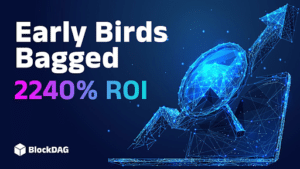The crypto market has already borne witness to the tremendous growth and subsequent slide of decentralized finance (DeFi) on second-generation blockchains, spearheaded by none other than Ethereum. To date, Ethereum dominates the DeFi landscape, thanks to its array of Solidity smart contracts.
However, as a layer-1 blockchain solution, Ethereum’s existing capabilities may have peaked. The Ethereum network is regularly criticized for its slow throughput and skyrocketing gas costs. To solve these problems, dozens of Ethereum layer-2 scaling solutions have emerged in recent years. But each are accompanied by their own limitations.
Meanwhile, realizing Ethereum’s problems and the growing demand for alternative layer-1 solutions, several new smart contract blockchains like Solana, Binance Chain, and the most-recent KleverChain, among others, have entered the mainstream crypto market.
Developers of DeFi protocols and decentralized applications (dApps) are increasingly using these new blockchains to offer a diverse array of decentralized products and services, which, in turn, is helping expand the DeFi ecosystem across several different blockchains and their respective communities.
Take a closer look at the layer-1 blockchain ecosystems contributing to DeFi’s momentum and the value they provide developers.
Solana
Solana is another promising layer-1 blockchain that rose to prominence when Ethereum was struggling to balance throughput and costs. It is designed to facilitate smart contracts and support a wide range of dApps and DeFi protocols.
Compared to second-generation blockchain networks, Solana has a user-friendly interface, lower costs, and faster transaction speed. Hence, it quickly became the go-to alternative for NFT projects, Web3 games, dApps, and DeFi and lending protocols.
The network rests atop a hybrid of Proof-of-Stake (PoS) and Proof-of-History (PoH) consensus mechanism to offer faster transaction settlements at low gas fees, appealing to developers willing to build highly scalable dApps and other decentralized projects with built-in NFT support. Some leading Web3 and blockchain investors are already backing the Solana blockchain, with the ecosystem now cementing its position as a formidable PoS alternative.
KleverChain
KleverChain has been in the making for a long time and was launched on the mainnet on July 1, 2022. Since Klever launched its first wallet in 2017, the team has been building an ecosystem that makes building on-chain products and services as simple as possible.
In addition to building products and services on the world’s most trusted blockchain networks, Klever runs over 100 blockchain nodes across more than 20 major blockchain protocols. Unlike existing layer-1 blockchains, KleverChain comes with prebuilt and ready-to-use smart contract functions for developers to build Web3 applications at scale.
Simply put, KleverChain empowers developers to build and deploy blockchain apps quickly and cost-effectively while integrating the full range of crypto features into their projects without needing any blockchain coding knowledge. In contrast to existing layer-1 solutions, many of which require developers to write the code for smart contracts themselves, KleverChain’s smart contracts are coded into the mainnet itself.
In the coming months, KleverChain will also cater to all kinds of developers, regardless of their blockchain or crypto experience, with its KleverOS SDK. On top of this, KleverChain uses the Proof-of-Stake (PoS) consensus mechanism to maintain network security, validate transactions, and facilitate decentralized governance.
Binance Chain
Originally called Binance Smart Chain, BNB Chain (Binance Chain) is cryptocurrency exchange Binance’s layer-1 blockchain ecosystem. The BNB Chain has registered promising growth in recent years, primarily due to its capability of supporting a wide range of cryptocurrencies and Dapps without Ethereum’s problems of scalability and gas costs.
On top of that, BNB Chain can also leverage Binance’s massive global user base, thereby giving Dapps access to a large community of interested users. According to a recent report by DappRadar, DeFi protocols and dApps make up a sizable portion of the BNB Chain ecosystem.
Binance Smart Chain has been around since 2019 and has positioned itself as a promising layer-1 blockchain that facilitates a wide range of decentralized financial products and services. It is expanding into MetaFi – a broader concept encompassing DeFi, GameFi, SocialFi, Web3, and the metaverse.
Disclaimer: This article is provided for informational purposes only. It is not offered or intended to be used as legal, tax, investment, financial, or other advice

















